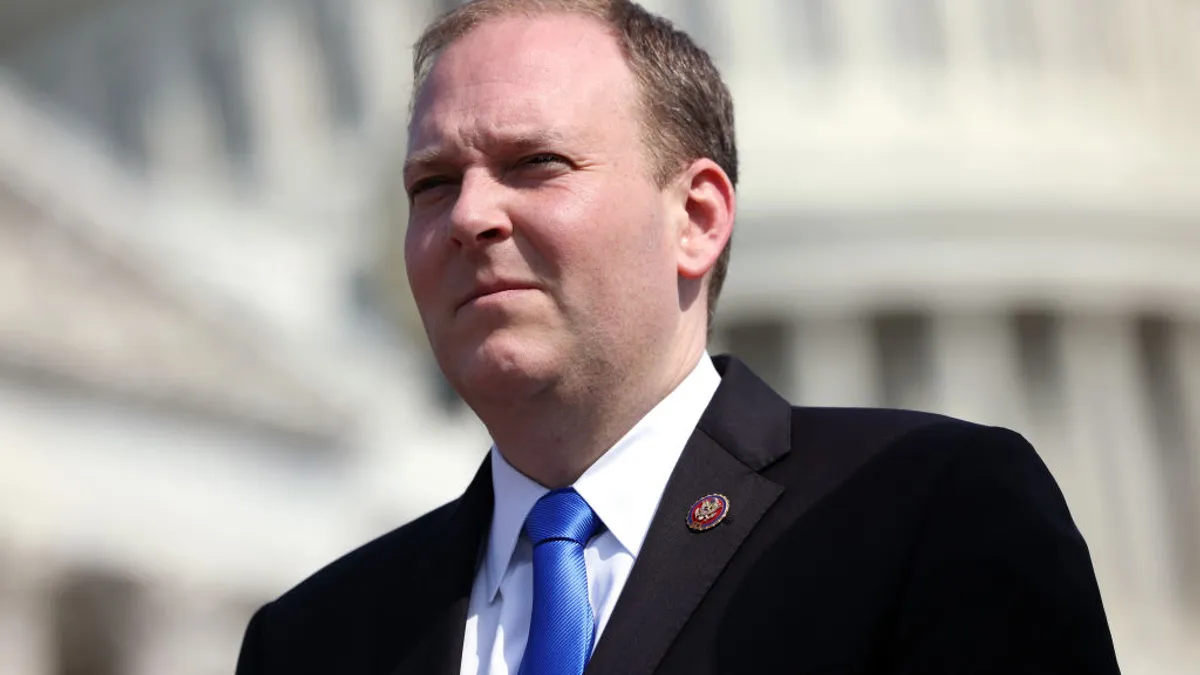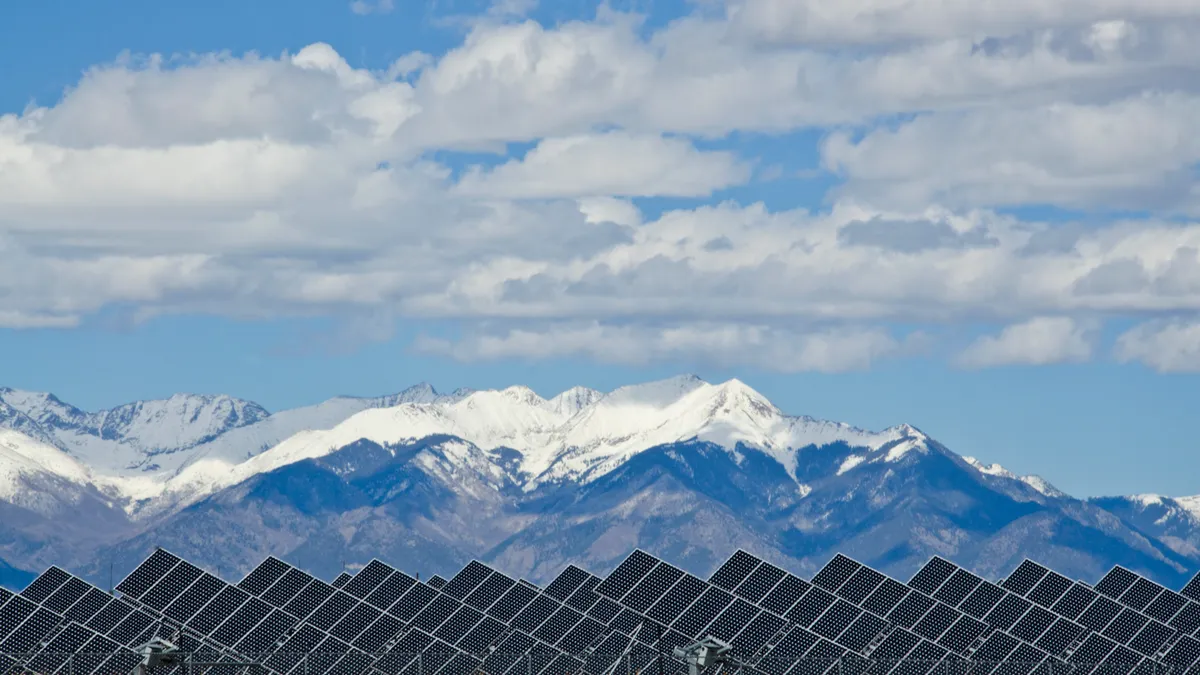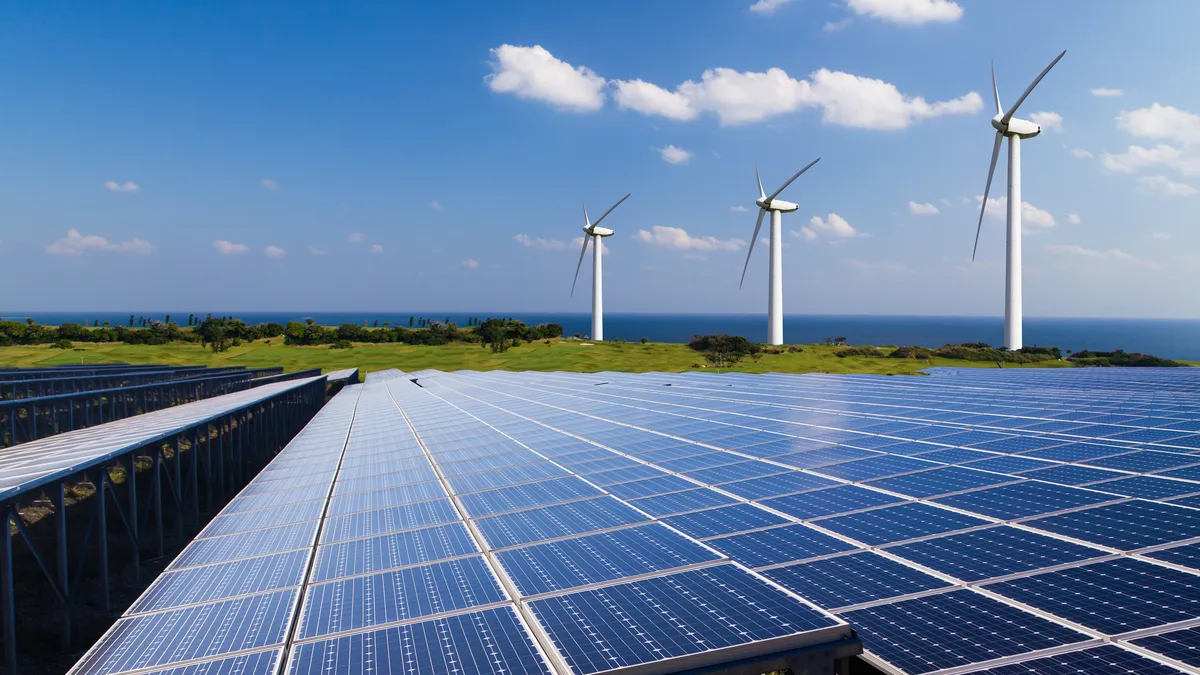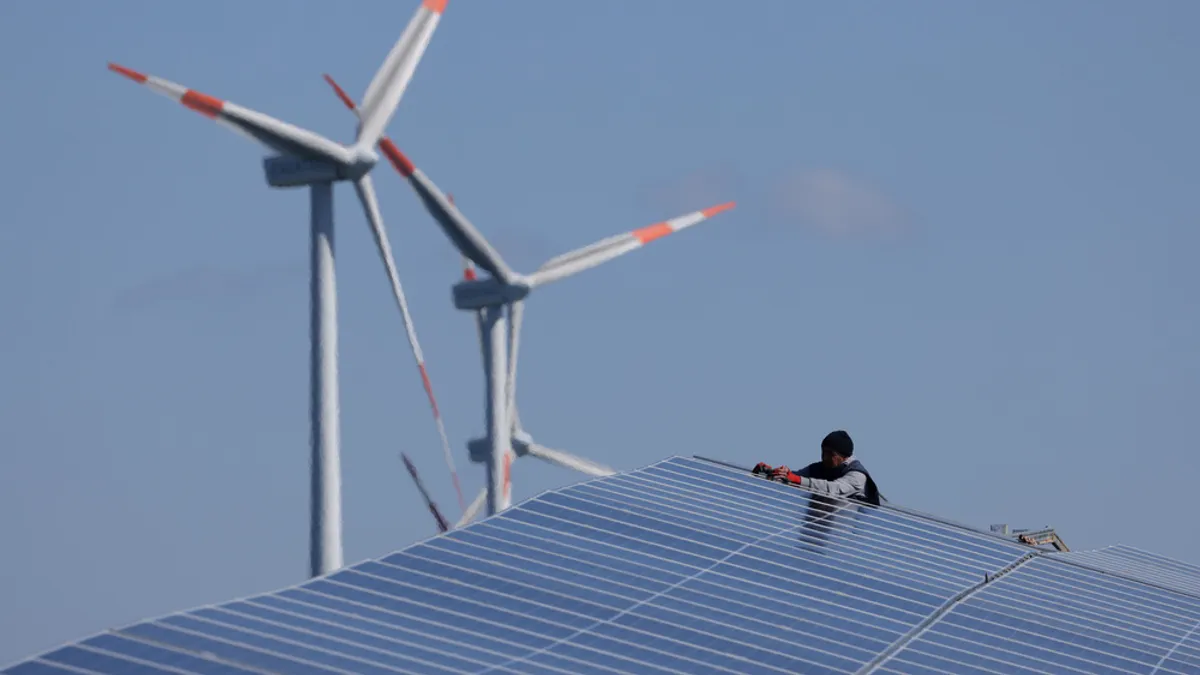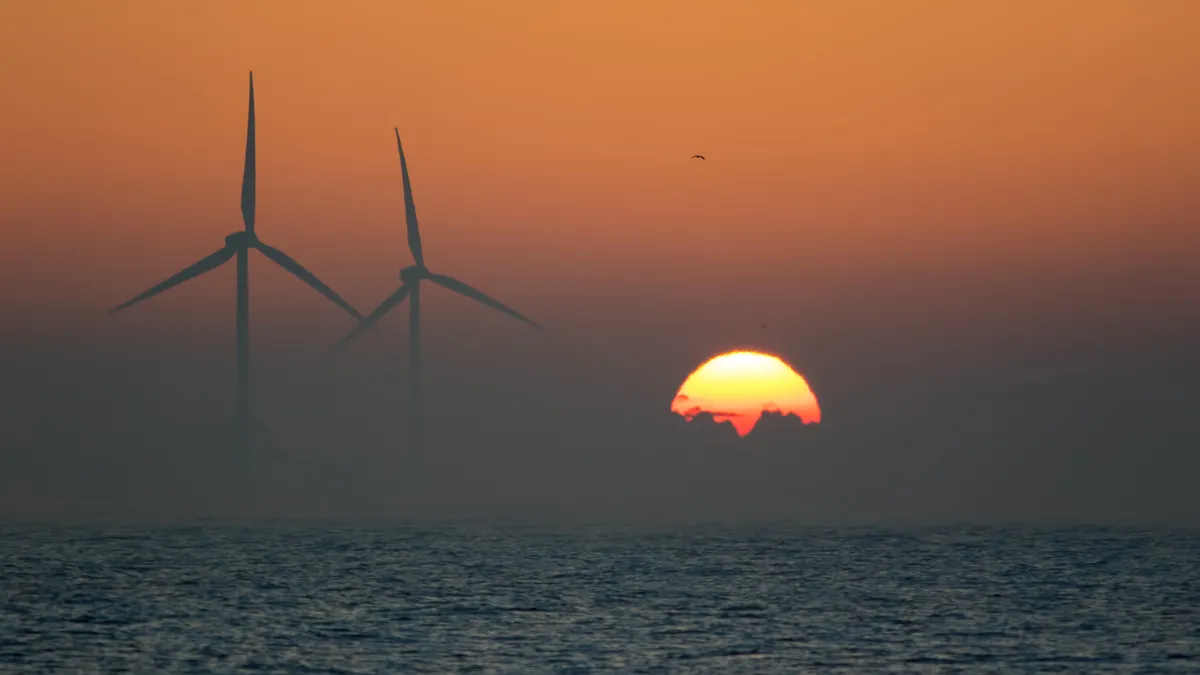This article is part of a series on the key issues driving the utility sector in 2019. All stories in this series can be found here.
After a year of pursuing solar system efficiencies and responding to tariffs targeting photovoltaic components, the solar industry is optimistic about its growth potential.
A new emphasis on clean energy in a number of states and the upcoming decrease in the solar investment tax credit will encourage near-term deployment of the renewable resource, analysts say.
"President Trump's trade agenda may still impose broad energy risks for all energy sectors in 2019, but state-led decarbonization efforts are intensifying right at the same time as solar economics are becoming increasingly more competitive," Tim Fox, vice president at ClearView Energy Partners, told Utility Dive.
The U.S. Energy Information Administration (EIA) expects 4.3 GW of utility-scale solar and 3.9 GW of small-scale solar PV capacity to enter service by the end of 2019. This lags behind behind the 10.9 GW of wind expected to come online in that same year, and EIA data shows the solar capacity being added to the grid is lower than 2018.
Despite this, solar continues to have a high potential as distributed generation and utility-owned generation, with soft costs and technology costs expected to decrease, analysts say.
Solar distribution 'evolution' places importance on state policy
The new, divided Congress has a long list of priorities before addressing solar, but the resource is receiving a lot more focus on a state level.
Green-leaning states are increasingly exploring ways to have renewable energy play a bigger role during moments of peak demand, which would provide "value both for solar deployment and also storage deployment," Fox said.
One pattern that stands out is the legislative and regulatory discussions of time of use rates, and integrating that with a renewable portfolio standard, such as in Massachusetts, to create a clean peak standard.
Time of use rates can help integrate larger solar capacity and give rational pricing signals for smaller, distributed capacity, according to Lon Huber, energy director at Navigant.
"That's why you do see a movement for states that either have high solar goals or have small solar or have a lot of solar on their actual system to move to more time-varying pricing," Huber said.
However, the transition to time-varying rates is happening slowly, as many utilities are "looking to pursue time of use through pilot programs while maintaining a preference for monthly demand charges or monthly flat charges," he said.
"States want to have an evolution, not a revolution, towards rate reform," Fox said.
As some states are transitioning away from net metering, regulators are acknowledging the gradual decline of solar cost, Fox said.
"Perhaps that softens the potential negative consequences that such reform can have on rooftop solar and that's good for solar providers," Fox said, adding that the gradual approach also brings regulatory uncertainty for developers and utilities.
"There's a lot of really amazing activity happening at state level and while they seem to have a customer buy-in or community buy-in for their individual goals, what they often seem to lack is an operational strategy for how to get there."

Jennifer Szaro
Vice president of research and education, Smart Electric Power Alliance
The interconnection to-do list
Cities and municipalities are also increasingly committing themselves to 100% renewable energy or zero net carbon goals. The numerous commitments offer an opportunity to research the best ways to interconnect additional solar resources and to modernize the grid, said Jennifer Szaro, vice president of research and education at the Smart Electric Power Alliance (SEPA).
"There's a lot of really amazing activity happening at state level and while they seem to have a customer buy-in or community buy-in for their individual goals, what they often seem to lack is an operational strategy for how to get there," Szaro told Utility Dive.
SEPA has a formal contract with the District of Columbia to help through their grid modernization planning efforts and the group is in discussion with the Mayors National Climate Action Agenda, a network of nearly 300 U.S. cities, to partner in 2019 to work on the operational challenges of renewable and zero-net carbon goals.
A key aspect of modernizing the grid is modernizing solar itself into a more dispatchable resource. The dispatchability of PV plants is also continuing to be an area of increasing interest, changing the way that the resource is viewed, Michael Bolen, senior project manager for renewable energy at the Electric Power Research Institute.
"From a hardware perspective, that functionality is in all inverters now, it's just a matter of using it," Bolen told Utility Dive.
Inverter technology can be utilized for larger-scale PV and for smaller residential systems as well. One example of this utilization would be basing the way solar is curtailed at a plant on what would benefit the life of the inverter or the equipment in the long-run, Bolen said.
Storage comes into the equation as plant owners try to mitigate the impact of curtailment on the capacity value of the plant in areas where excess solar capacity, typically displayed in the duck curve, needs to be sponged up. Additionally, Bolen noted that plant-level controllers could be used more effectively.
Besides crafting their integrated resource plans to choose the lowest cost options for reliable and safe service, utilities need to ensure regulators and other stakeholders are "moving in lockstep," he added.
"It's important that all stakeholders understand where those innovations are and how they could positively benefit the grid at large, and that's where EPRI plays a strong role in being able to provide that technical guidance," Bolen said.
Lower energy costs and the need to fix duck curves are regional concerns, and there are wider interconnection trends being watched nationally.
"One of the things we're going to be watching around the country is how utilities are going to be adapting their current interconnection requirements both for utility scale and for customer-scale projects to accommodate storage plus solar," SEPA's Szaro said. About 60% of SEPA's more than 1,100 members are in the utility sector.
Technology pairing and low, low costs
Experts see the pairing of energy storage with solar as an increasingly competitive option in states with a solar duck curve — the drop in net electricity load during solar generation at midday that gives way to a steep ramp up in demand when the sun sets.
Already, solar bundled with storage has offered lower and lower price points. One trend to watch throughout the year is the type of batteries being used.
"Are [utilities] going to continue to focus on the more traditional lithium ion batteries or are we going to see more stationary flow batteries in the mix, that have the potential for a more robust cycling capability?" Szaro said.
Some projects will require controlled ramping more frequently, and the investment in different types of storage will have a potential impact, said Szaro.
"Make no mistake, the prices that you see for renewable PPAs, both wind and solar and wind- and solar-plus-storage are in a revolution that's happening right now."

Lon Huber
Energy director, Navigant
Hawaiian Electric submitted seven solar-plus-storage projects for approval using lithium-ion batteries. The cheap cost-structure developed in Hawaii, a state that has searched for alternatives to importing expensive petroleum for electricity. As the economics become more favorable, solar-plus-storage projects are going to hit the mainland, first in coastal states where electricity prices are higher, Navigant's Huber said.
"Make no mistake, the prices that you see for renewable PPAs, both wind and solar and wind- and solar-plus-storage are in a revolution that's happening right now," Huber said.
According to the EIA, nearly half of the 4.3 GW of utility-scale electric power sector solar photovoltaic (PV) capacity additions are located in Texas, California and North Carolina. The increasing capacity additions in Texas, a state that deployed a lot of cheap wind energy, indicates the attractiveness of PV.
"We are seeing a lot more states that have existing wind look at solar as cost competitive," Fox said, noting Texas and Midwestern states with a high wind capacity.
Depending on the region, solar is also becoming increasingly competitive with natural gas peakers, which represent a small segment of natural gas demand. In California, the growth of solar have forced some of the plants offline, representing "the first victims of how the growth of solar is cutting into natural gas peakers," Fox said.









